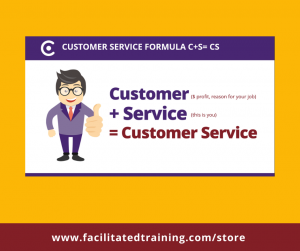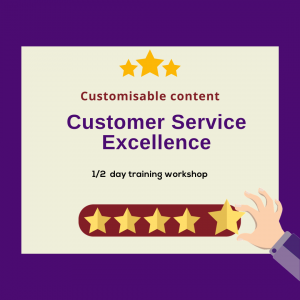Customer service is arguably the most important thing for your business to get right.
In this article, we will be focusing our attention on face to face interactions and customer service.
When customers have a terrible customer service experience, they are often quick to ensure that other people learn about it. People have expectations about how a company will serve them and if an employee mistreats them or the customer support is not up to standard it can be detrimental to a brand’s image, and it is most likely to impact the business’ bottom line.
In a world where increasingly more interactions and purchases can be made from the comfort of a customer’s home, the need for exception customer service is more critical than ever. More so, when customer is more likely to use social media to share their feedback instantaneously.
Stories from the field when customer service turns pear shaped.
No company is perfect, and every business is going to make occasional mistakes when working with unhappy customers. It’s no easy task to diffuse someone who’s highly frustrated, leaving employees with very little room for error when dealing with a disappointed or angry customer. Even the most successful brands can be susceptible to having a bad customer service moment if they are not focused on the customer’s success.
Retail.
As Christmas approaches, many stores are receiving and unpacking new stock for Christmas. This makes sense, right? What doesn’t make sense is when employees prioritise unpacking and pricing items over customers who are ready to purchase.
Visualise this.
It’s mid-morning on a Saturday. The brunch crowd is in. The kitchen is busy. There is new staff being trained to meet the upcoming ‘high’ season. There is a queue at the counter for food orders.
The café also sells curated gifts and items from local producers. The café gift wraps items purchased, beautifully. The items for purchase are certainly not cheap and cheerful and reflect the quality of the items sold. Gifts are selected. The customer reaches out to the employee pricing the Christmas stock, saying that they would like to purchase the items selected.
The employee glances up, nods in the direction of the food counter, saying that the potential customer will need to pay for the items there. The employee is working next to the gift wrap counter, where there is also a register. The customer looks at the food counter, where the queue has increased, as the business is training a new employee at a peak time, resulting in slower time in service.
How do you think the customer felt?
They didn’t feel important or welcomed. They felt that their custom was secondary to the task of pricing stock yet to be sold, versus the items they had in their arms. The same items that would have paid for the wages for the employee who has just ‘bumped them’ to another counter. Given that the things were to be gift wrapped, it was likely that they would be bumped back to this employee.
The customer made a decision. They left the items on the counter. They left the café. They left feedback on café’s Facebook page. The café lost a sale on that day, and have lost both future food and giftware sales in the future.
It was completely avoidable. The employee and the business have lost sight that customers are needed to keep the business running. A sale today is likely to be another in the future. Instead they lost business. How many other customers did they loose that day?
Story from the field 2.
Our customer is at the airport, waiting to check in. It is busy; however the check in area is well staffed by the airline.
The flight board says that the counter is open for check in. The customer attempts to check in- without success. The check in kiosk refers the customer to the service desk. The customer goes to the service desk to be told that check in was not open yet.
The customer goes back to the queue. A few minutes go by. No announcements are made, giving updates. A different airline employee says that the check in kiosk is now open. The customer tries to check in again without success. The kiosk is not recognising the customer details. For the second time they are referred to the service desk.
The same service attendant says that the check in kiosks are not open yet and refers the customer back to the kiosk, saying that kiosk will be open in 5 minutes.
The customer with luggage in tow, heads back to the self check in kiosk, feeling frustrated. The Service desk attendant has not taken the time to determine any information. Information given by employees is not consistent. The customer is instructed for the third time that the check in kiosk is now ready for check in.
And you guessed it – the message on the screen says to contact the Service desk.
This time, the customer is directed to another check in queue where an employee updates the system and manually checks them in.
How do you think the customer felt?
• They had attempted three times to check in.
Communication changes from employee to employee.
• The customer was made to feel like a burden
• They did not ask any questions to verify the type of customer or ticket type.
• The employees did not use the communication channels to keep their customers updated.
• Other customers were similarly frustrated.
• Without evening registering, the check in team had damaged the brand’s reputation, as they were so focused on their tasks, that they were not customer focused.
“It takes 20 years to build a reputation and five minutes to ruin it. If you think about that, you’ll do things differently.” –Warren Buffett
It was completely avoidable.
3 Effects of awful customer service
1. A Damaged Reputation
2. Sales commence an ongoing cycle decreasing
3. Your Customer Lifetime Value Drops
Of course, “good customer service” is often up for interpretation.
It’s only reasonable for small mistakes to happen or to encounter customers that are impossible to deal with. These are generally small bumps in the road and don’t constitute bad customer service.
The good news is that even the worst customer service habits can be corrected without detrimental damage to your brand, assuming you take action quickly.
According to a recent report from Sales Force, Customer service statistics that show the importance of keeping customers happy.
“Whilst the statistics below are based on US data, the results are reflective of other countries experiences.
• A customer is four times more likely to buy from a competitor if the problem is service related rather than price or product related (Bain & Company).
• The majority of Americans have decided not to make a purchase because of a poor customer service experience (American Express).
• It takes 12 positive customer experiences to make up for one negative experience (Ruby Newell-Legner’s “Understanding Customers”).
• 70% of buying experiences are based on how the customer feels they are being treated (McKinsey & Company).
• 62% of customers say they share their bad experiences with others (Salesforce Research).
It’s not all doom and gloom though. The same study by Salesforce showed that 72% of customers will share their good experiences with others. That’s a full 10% more positives than negatives.”
For some, providing consistent great customer service comes naturally. For others, there need to be ongoing training, and relating customer service back to the organisations goals and brand.
However, customer service doesn’t need to be complicated. Here are five steps to effective customer service.
1. Make the customer feel welcome
a. Acknowledge the customer, where appropriate, introduce yourself.
2. Make the customer feel understood.
a. Ask how you can be of service to them
b. Reclarify what the customer has communicated
c. Recap key information
d. Show empathy when appropriate
3. Make the customer feel comfortable
a. Provide relevant information to your customer about what they can expect, when it will occur, and how it will be completed.4.
4.Make the customer feel important.
a. Thank them for their time and custom. If they are repeat customer, acknowledge that they are important to you and the organisation. Actively listen and focus on open body language.
5. Ensure that the customer is happy with the outcome and experience.
a. Prioritise what is important to the customer.
b. Follow up with commitment and updates as needed
c. Be sure to ask if there is anything else that you are able to assist them with.
Lastly remember that customer service is a dynamic relationship.
According to Kolsky It costs 6-7 times more to attract a new customer than to retain an existing customer .
Can you and your organsiation afford to loose your existing customers or potential customers?
Seeking customisable customer service training materials? Facilitated Training can help.
Buy and gain access to “Creating Customer Excellence” training package with all you need to deliver a high powered ‘customer service training program.
Follow the well-structured adult learning format and deliver powerful training. Our high impact training courses and references have been designed to pay, print and train immediately, alternatively you can customise the training material to add flavours and experiences of your workplace, such as case studies, naming conventions and examples.
It is designed by experienced instructional designers with, more than 20 years’ experience designing and delivering professional development courses. High impact slide decks, and workbooks, and guides are included in each course purchase.
Each training course includes:
• Detailed Trainer / Facilitator Guide
• Targeted PowerPoint Slide decks
• Learner Workbooks
• Adult centred training activities
• A self-paced learning plan for learning application back in the workplace
• Learning quizzes/ knowledge check
• Gamified Learning quiz
• Learner Attendance Certificate
• Attendance record
• Training evaluation sheet
Duration: ½ day
Audience: This training is primarily aimed at staff directly involved in customer service, however, anyone with any contact with customers will benefit.:
• Customer Service Teams and Managers
• Sales Professionals and Sales Support Staff
• All Front Line and Support Staff in contact with customers
• Brand Ambassadors in contact with the public or press
• Receptionists, Telephonists and Public Ambassadors



